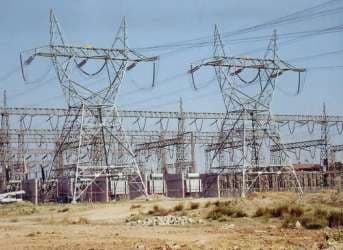As the “Third World” races to industrialize, rising population demands for reliable energy place increasing stress on a country’s power generating capabilities, and nowhere is this more evident than in BRIC nation India.
“Energy from anywhere” seems to be New Delhi’s motto, as the cost of India’s energy imports is proving a significant drag on the otherwise explosive growth of the nation’s economy. India, the world's fourth largest oil importer, ships in 80 percent of its oil requirements. The detrimental effect on India’s balance sheet is underlined by the fact that the value of India’s exports in October 2011 was $19.87 billion, but this was severely undercut by oil imports during the same month, which cost the nation $10.08 billion. Should rising tensions in the Persian Gulf eventually lead to armed conflict between Iran, Israel and the U.S., then the inevitable soaring cost of oil could push the Indian economy into recession.
But an overlooked element in India’s ravenous power needs is increasingly dominating government discussions – the ramshackle state of its power transmission and distribution (T&D) national grid, which is in need of immediate and massive investment.
According to a recent report by strategic risk management firm Orkash Services Pvt Ltd, for every dollar invested in India’s power generation industry, only half a dollar is put into T&D.
So, according to Orkash Services Pvt Ltd, the cost to bring the country’s T&D sector up to speed?
A mere $75 billion.
This is hardly an alarmist proclamation by an obscure company. Founded in 2007, Orkash Services Pvt Ltd is now incorporated in both India and the U.S. with representative offices in Britain and Malaysia.
Like many energy poor countries with rapidly rising economies, India’s government sees the development of a nuclear power industry as a potential godsend to meeting soaring demands for electricity. India currently has 20 nuclear power plants (NPPs) reactors online and seven additional NPPs are currently are under construction, including a 500 megawatt fast breeder reactor, giving the country a total nuclear capacity of roughly 4,800 megawatts.
In case anyone is in doubt about New Delhi’s commitment to nuclear power, on 22 February Power Minister Sushilkumar Shinde said while addressing a seminar at India International Nuclear Symposium, "India plans to have a total installed nuclear capacity of 63,000 megawatts by the year 2032 both from indigenous technology and imported reactors. Nuclear technology has several distinct advantages - it is compact and highly manageable in terms of handling, transportation and storage of the fuel," he said, adding that it is greener than all other power generation technologies.
The same day that Shinde spoke India’s Atomic Energy Commission chairman Srikumar Banerjee also weighed in strongly in favor of nuclear power, commenting, “Energy based on imported coal will cost much more than nuclear energy,” adding that if India instead of developing nuclear power increased its dependence on coal for power generation, it would increase India’s greenhouse gas carbon dioxide emissions. Acknowledging public concern about the safety of NPPs, which rose in the wake of the 11 March 2011 Fukushima nuclear catastrophe in Japan Banerjee commented, “There is a fear that accidents will have extensive consequences on human population and the environment. It is important to drive home the point that technology will not allow that to happen.”
As for increased use of coal in lieu of other energy sources, India’s relentlessly growing demand for power in conjunction with a rapidly increasing shortage of indigenous thermal coal has recently pushed India to surpass China as the world’s biggest thermal coal importer, with Prime Minister Manhoman Singh seeking additional supplies, as the shortages have stymied plans for $36 billion of new coal-fired power plants.
Seeking increased indigenous energy resources wherever possible however controversial, the Indian government is now also assessing the availability of shale gas to meet the country’s rising energy demands. In 2011 India’s state-owned Oil and Natural Gas Corp. Ltd. (ONGC) in cooperation with Schlumberger drilled the country’s first shale well in West Bengal.
On a sunnier note, India has also firmly embraced solar power, advancing the target date by five years for selling solar-generated electricity at the same rate as electricity generated by fossil fuel plants, from 2022 to 2017.
Accordingly, given the nation’s constantly rising demands for power, the tough calls in New Delhi are twofold – what source of energy is best for the nation, and how to upgrade the national grid to handle the projected increased output? To use a metaphor, there is no point in owning a Rolls Royce in India if the only roads are muddy tracks best covered by oxen carts. Sooner or later, for all of India’s electrical dreams, someone is going to have to grasp the pedestrian reality of how all those megawatts, whether nuclear, shale gas, coal or solar, are going to travel from a to b.
By. John C.K. Daly of Oilprice.com


















Much is made of peak oil, peak uranium is also of concern, so again, thorium would be a better choice.